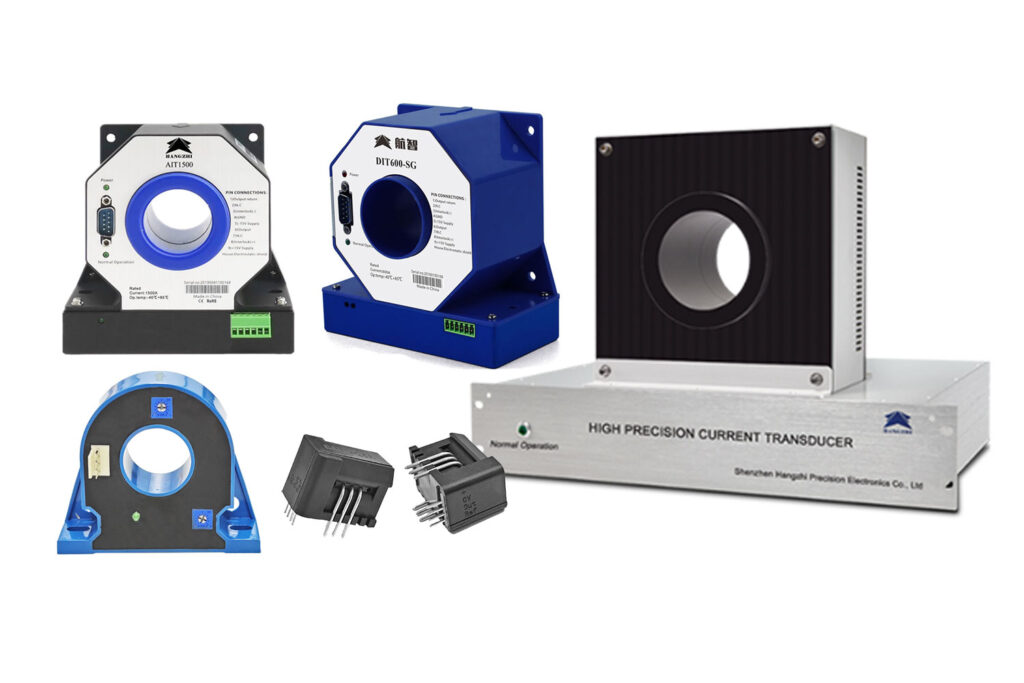
There are various kinds of trasduttori di corrente that are out there. such as Shunt Resistor, Hall Effect Current Sensors, Current Transformer and Fluxgate Current Sensor are some of the most common types. Each type has its own advantages and disadvantages. This article will share the 9 best tips for how to select the right high-precision current transducer.
1. Understand Your Application Requirements
Before select a transducer, you should know what you need it for. such as the type of current (AC or DC), the range of current values you need to measure, and the required accuracy.
2. Consider Right Measurement Range
Current sensors have a certain range of current and can measure with high precision; This range is called its measurement range. It is crucial to choose sensors with a measurement range. If the range is too high, sensor overload is a risk, while if the range is too low, the entire current range cannot be measured. The resolution of the sensor or the minimum current change it can detect is also crucial.
3. Care About the Sensor’s Accuracy and Linearity
Accuracy and linearity are equally important considerations for transducer. The accuracy is how closely its readings match the real values, while its linearity of a sensor is its ability to retain a consistent sensitivity over its measurement range. To guarantee precise and trustworthy readings, a sensor with good accuracy and linearity should be used.
High-precision transducers should have low error rates and provide consistent, reliable readings. Hangzhi AIT Series High Precision Current Transducer’s accuracy 10ppm, linearity 2ppm.
4. Consider Response Time
Response time refers to the time required for a sensor to record changes in current and generate appropriate output signals. Selecting a sensor with a quick reaction time guarantees precise and timely readings. If the reaction time is too long, the sensor or circuit might be damaged in situations where the current is constantly shifting.
5. Evaluate Output Signal Type
Check the type of signal that the current transducer sends out. Typical output types include digital signals and analog signals (current or voltage). Verify that the transducer’s output signal is compatible with your control system or data acquisition device.
6. Environmental Conditions, Mounting and Installation
Consider the operating environment, including temperature range, humidity, and potential exposure to chemicals or vibration, and choose a transducer that can withstand these conditions.
Ensure the transducer’s mounting and installation requirements align with your system’s capabilities and constraints. Isolation is also one of the factors in choosing sensors. Ensure the transducer provides adequate electrical isolation for safety and to prevent signal interference.
7. Check Compatibility with Existing Systems
Check the compatibility of the current transducer with your existing systems. Ensure the transducer’s physical size, mounting options, and electrical connections fit seamlessly with your setup.
Compatibility reduces the need for additional modifications and ensures smooth integration. Verify that the transducer meets the standards and specifications required for your system.
8. Compliance, Standards and Cost
Check that the transducer meets any relevant industry standards and regulations for your application. Consider the cost of the transducer in relation to your budget and the value it provides in terms of performance and reliability.
9. Check Manufacturer Reputation
Before you buy a current transducer, find out how well-known the company that made it is. Read reviews and ask for recommendations from industry professionals. Choose a transducer from a reputable manufacturer with good customer support and a reliable track record.
Choose the Right High Precision Current Transducer
By carefully evaluating these factors, you can select a current transducer that is well-suited to your specific application needs.
